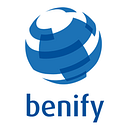The time it takes technology to advance has been estimated to be every 18 months to two years, something which has come to be known as The most noticeable technological impact on HR solutions has been the ease at which Remote work and hybrid work has changed the face of business, especially desk jobs, forever, but there are jobs, such as healthcare and maintenance jobs, that have always been remote or field based. A Moore’s law. When this is applied to different areas of IT, it has been said that in 2025, there will be a predicted 38.6 billion smart devices sharing data, 4.4 million internet users, and 70% of all tech spending will be on cloud based solutions. This, in turn, has had an impact on HR solutions, and will continue to do so as we head towards 2025.
total rewards and benefits platforms can be implemented, especially cloud based SaaS platforms (Software as a Service). This has not only meant that a reward platform has saved companies time and money through easier configurable installations and integration, it has also had a knock-on effect for employers and how their rewards are being used by employees.
cloud-based SaaS rewards platform can be used by employers to reach employees no matter where they might be, and with the information being stored by cloud technology, it means they have faster access to it. Employers can therefore easily target employees that work remotely more easily with bespoke benefits that fit their own unique situations. The same can be said of employees that now find themselves back behind their desks at offices across the globe.
With better security features and data collection, employers can roll-out specific benefits to single employees, teams, and whole organizations in different countries. This is all based on the ability a SaaS platform has in collecting and analyzing data provided by employees through, for example, surveys, which is then number-crunched through integrated cloud analytics. This allows companies to also test what rewards work best for them, which also drives productivity and cuts costs.
It’s therefore very important for a company to choose the right technology for their needs when it comes to HR solutions. If there are going to be 38.6 billion smart devices sharing data in 2025, then businesses will have to get their reward strategies right.
What will reward strategies look like as technology improves?
- The trend looks set to continue for employees to check and use their rewards on-the-go through smart devices. It is up to employers to use the data collected from their employees’ information to create specific rewards and benefits that are relevant and won’t go unclaimed.
- A reward and recognition system that is cloud-based gives instant recognition to employees. This should convert to employee retention and reduce absenteeism.
- Transparency through a HR platform will be paramount when reward strategies are drawn up. Company culture goes hand-in-hand with how information is shared with employees, and therefore it wouldn’t be surprising for companies to start sharing more detailed information about pensions, insurances, payroll, and time management with their workforce.
- Following on from point 3 are recognition programs that focus on employee performance, such as KPIs and milestones. This information can then be used to find out what’s working for the business and each individual employee.
- Surveying employees to keep up with how employees are feeling will help companies to scrutinize their total rewards and come up with improved or different rewards for employees that, for example, are showing signs of burnout.
- It could be the case that reward strategies will become simplified and won’t always rely on monetary rewards. For example, good behaviors such as volunteer work or getting vaccines could be incentivized.
- Healthcare and well-being will continue to be a critical area for companies to focus on. A healthy workforce = a healthy workplace, and rewards in this area will continue to include bookable doctor appointments, gym membership contributions, spa treatments, and many more.One of the least convenient things for employees to do is to book times with health professionals, and if they can do this through a cloud-based SaaS HR total rewards and benefits platform, then this means they won’t have to wait on the phone to book a time.
As technology continues to move at high speed, so too will HR solutions. There might come a day when employee autonomy will play a larger role when it comes to the rewards they would like to have, but for now, employers can make these decisions all due to cloud-based technology that fuels and will continue to fuel HR reward platforms in the years to come.
For more information about how a HR total rewards and benefits platform can effectively manage your employee benefits digitally, read our whitepaper below!
Originally published at https://blog.benify.com.
